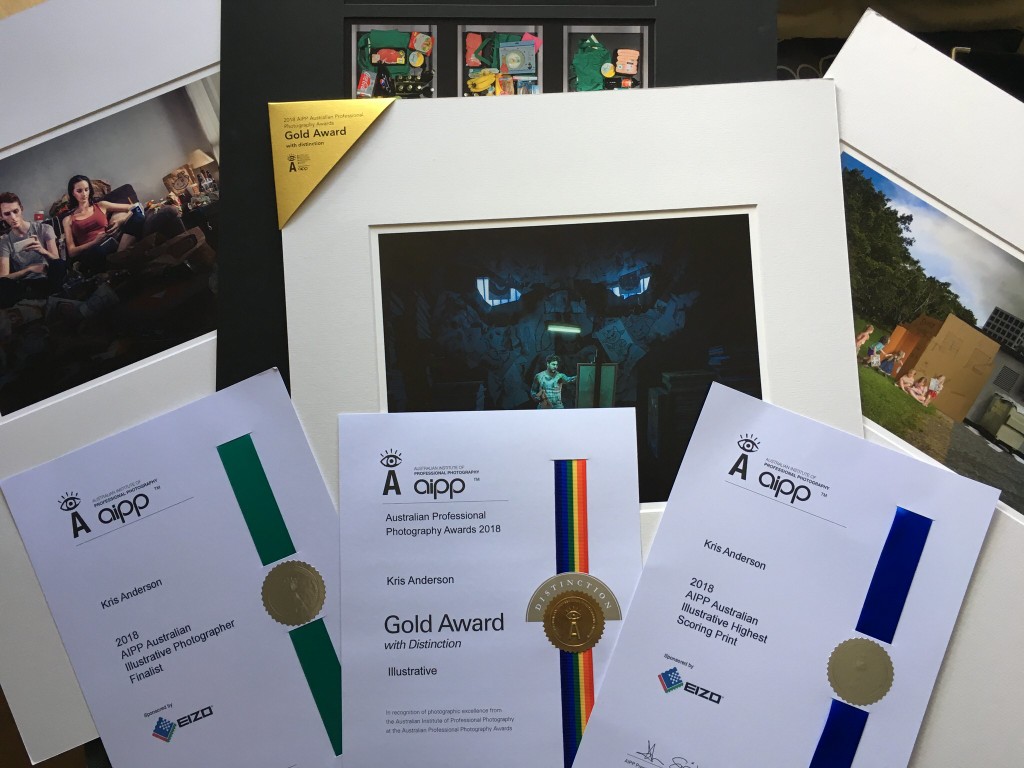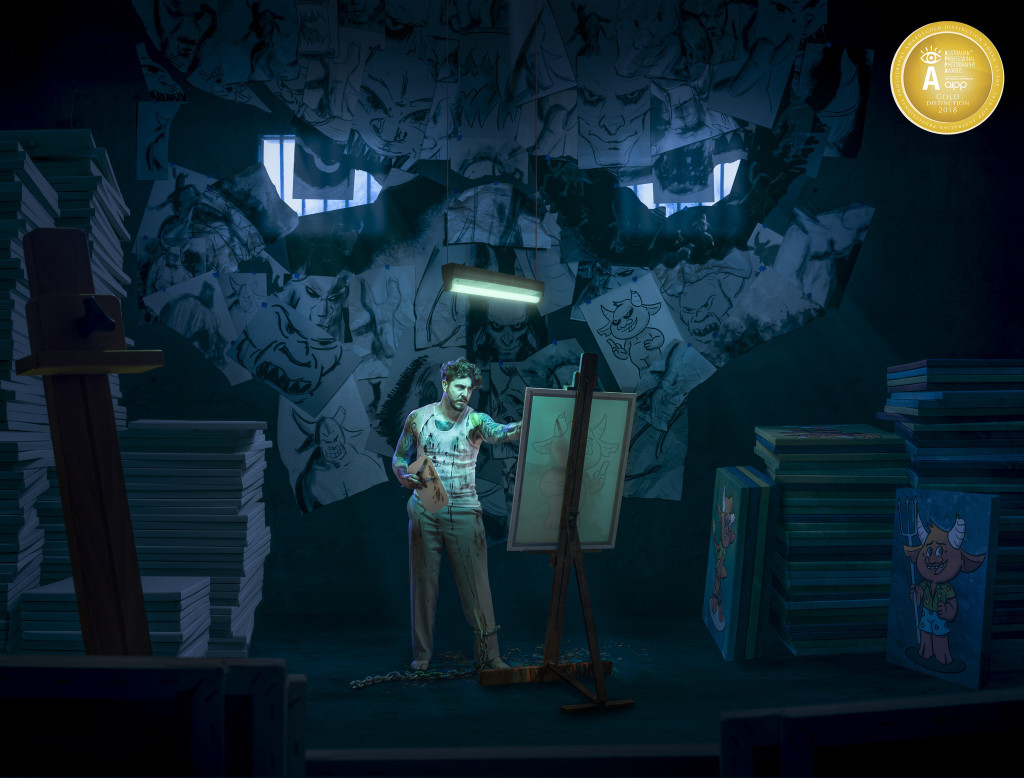
After turning it over in my head for a while, I cooked up a visual of an artist in a cell, enslaved by a huge, hulking presence, and forced to sell artwork. Even though the artist sketched tortured, haunted images of that muse, they dutifully created commercial, saleable pieces that would sell like hotcakes. (Think cutesy, like Minions.) Originally this was going to be a sort of split-down-the-middle shot, with a super-commercial art gallery on the left, staffed by peppy smiling sales staff, checkerboard floor, big posters and prints and figurines… with a door leading to the back room, a concrete cell with the artist forced to work day and night to make the work. The meat of the story was the workshop, and over time it morphed in to a composition about that workshop, with an open door so the viewer could glimpse the gallery.
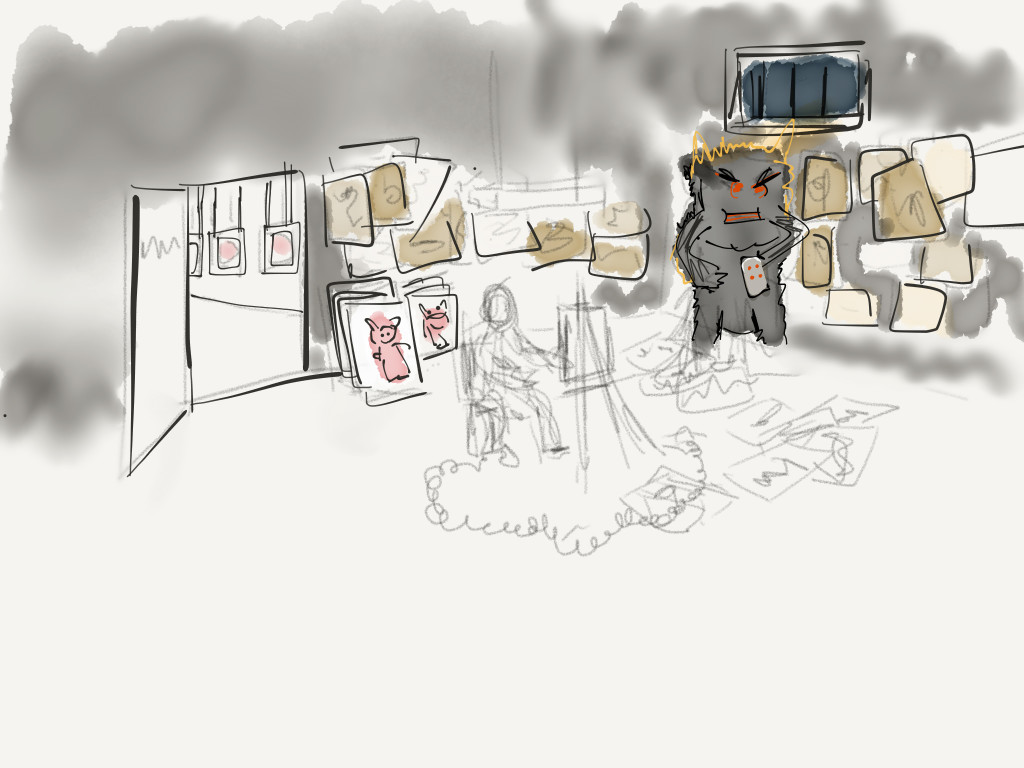
I have a very important collaborator for this image – Sean Dowling. Sean is a talented artist/illustrator/graphic designer/actor/you name it. I met Sean working with ImproMafia several years ago, and we’ve both contributed to the same commercial pieces in the past, but never as collaborators. I pitched the idea to Sean, asking if he would not only play the role of the tortured artist, but sketch and draw all of the creatures for the finished piece. Sean jumped in with both feet!
What I didn’t have was a location. Getting all of this right in camera would save a ton of time and effort. I’d scouted around for some good concrete box rooms where I could have easy access, with no luck. So – time to create a room from scratch. With lighting to match the light sources in the sketch, and an investment of $5 in clothes from Vinnys, Sean got all painted up and we spent an afternoon shooting tortured-artist poses. Later I put on some chains (a prop from the Brisbane Arts Theatre’s production of The Crucible), so in the final version one of those feet in the shot is mine!
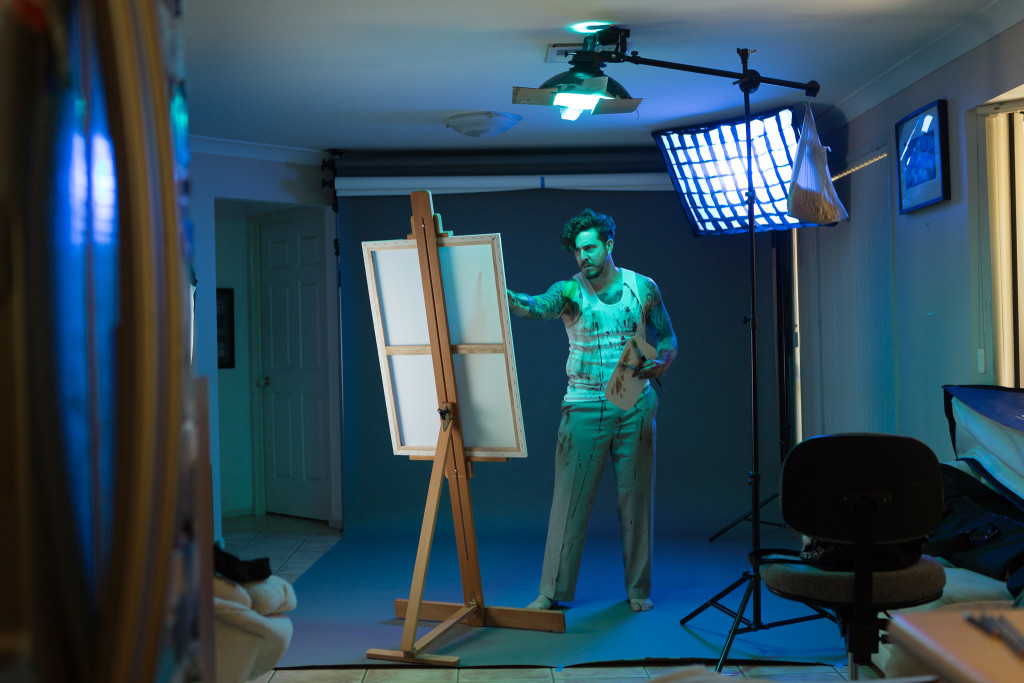
Sean’s artwork was amazing; he nailed the brief, and brought a lot of himself to the pictures. He showed such attention to detail; even in the roughest of sketches, he ensured the creature’s left horn was broken, and in many of them the creature had a bite taken from the right ear – hopefully touches that would help the viewer realise these were all in fact the same creature.
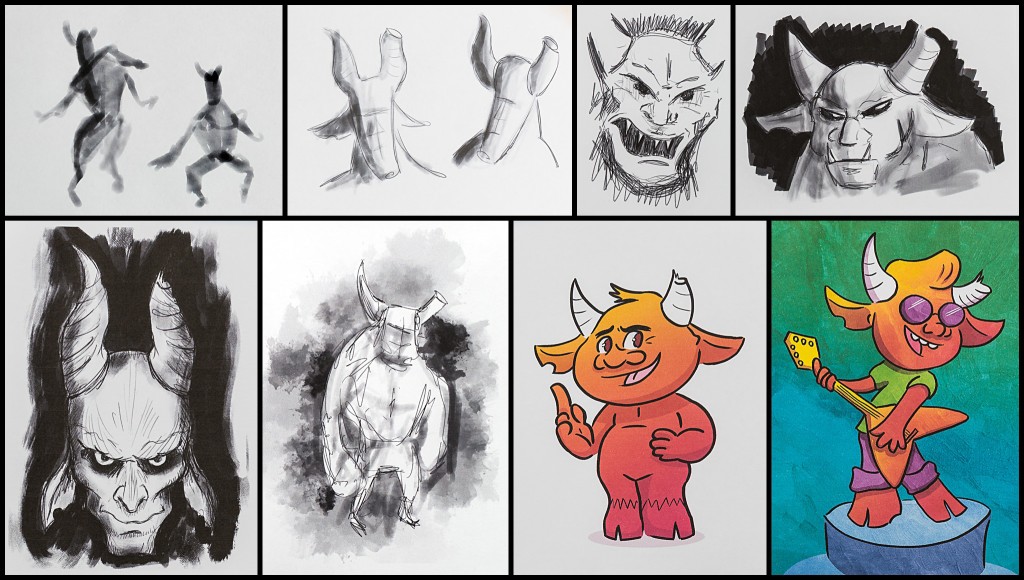
After a bit of work, it was obvious the first composition wasn’t going to cut it. The bright gallery on the left of the image, while important narratively, just sucked way too much attention. When your eye fell on the image, it hung around that door first, visited everything else, then came back to the doorway. That wasn’t what I had in mind at all. After trying a bunch of different gallery looks, I decided to take that gallery out. Narratively the image would need a different way to imply a workflow of image creation, but the gallery wasn’t it.

To give it that print-production-workflow and make the viewer understand this guy had volumes of work coming through, instead of the gallery, crates of canvases did the job. As always, there are some super-low-budget constructions in here. The crates of prints are fashioned in photoshop from the back of a bookshelf and some fence palings. And the barred windows? Take a regulation 40x50cm APPA-sized picture frame, spray bug spray on the glass to make it opaque, and gaff it to the pool fence. Voila – dirty barred window. (Note to self – don’t leave it up overnight because it’ll fall and the glass will smash. Oops.)
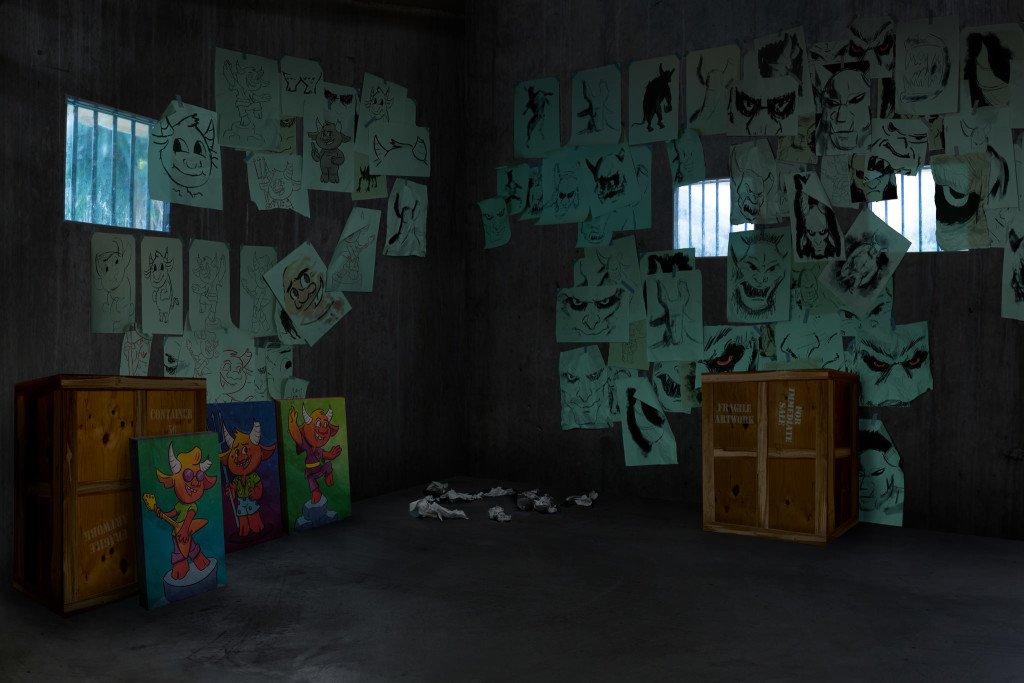
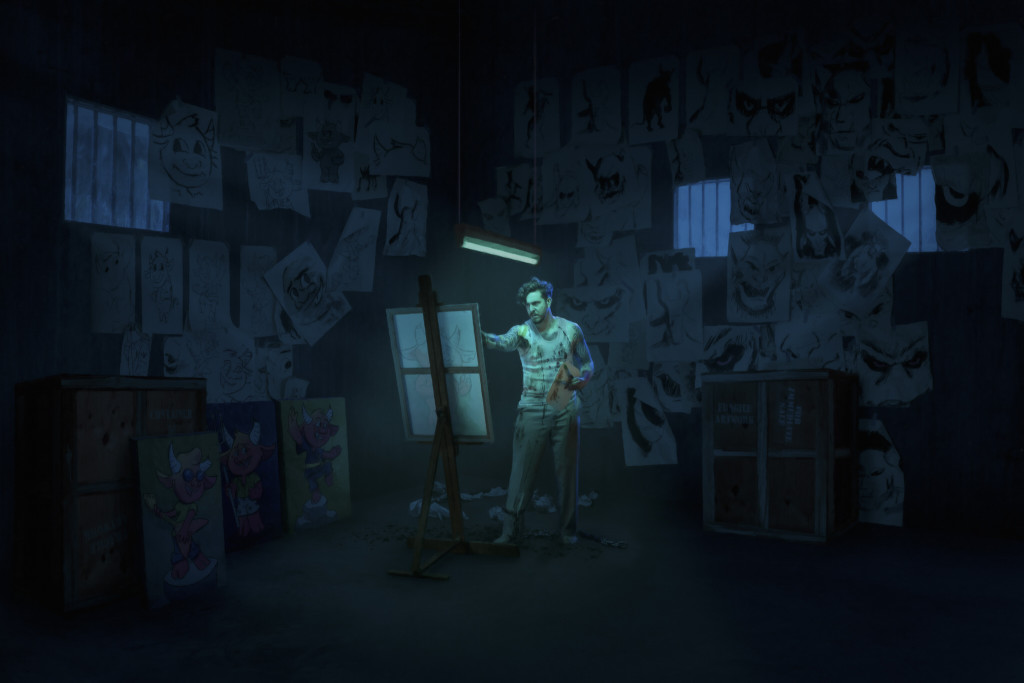 This version went to the Queensland Professional Photography Awards, and scored an 83, a Silver. Not too shabby. Sean wasn’t satisfied though. He pointed out the similarities between this image and Sleepless, and pushed me to do better. So – time to start from scratch. In this version, the artist is alone; he’s haunted, but the thing haunting him isn’t really present. How to make it a massive part of both the narrative and the image? Hey, those two windows on that back wall look a little like eyes… Hmm…
This version went to the Queensland Professional Photography Awards, and scored an 83, a Silver. Not too shabby. Sean wasn’t satisfied though. He pointed out the similarities between this image and Sleepless, and pushed me to do better. So – time to start from scratch. In this version, the artist is alone; he’s haunted, but the thing haunting him isn’t really present. How to make it a massive part of both the narrative and the image? Hey, those two windows on that back wall look a little like eyes… Hmm…
In the new version, every sheet of paper is separate, and they each have their own shadow, toning, and image laid over it. I think this is as close to “painstaking” as I get. The other big surprise was realising I needed to make a stack of 60 or 70 canvases, when we only had four in the house to be used as props… Talk about making life hard for yourself.
I could talk about how it came together, but… instead, watch the video at the end of this entry. It does a much better job.
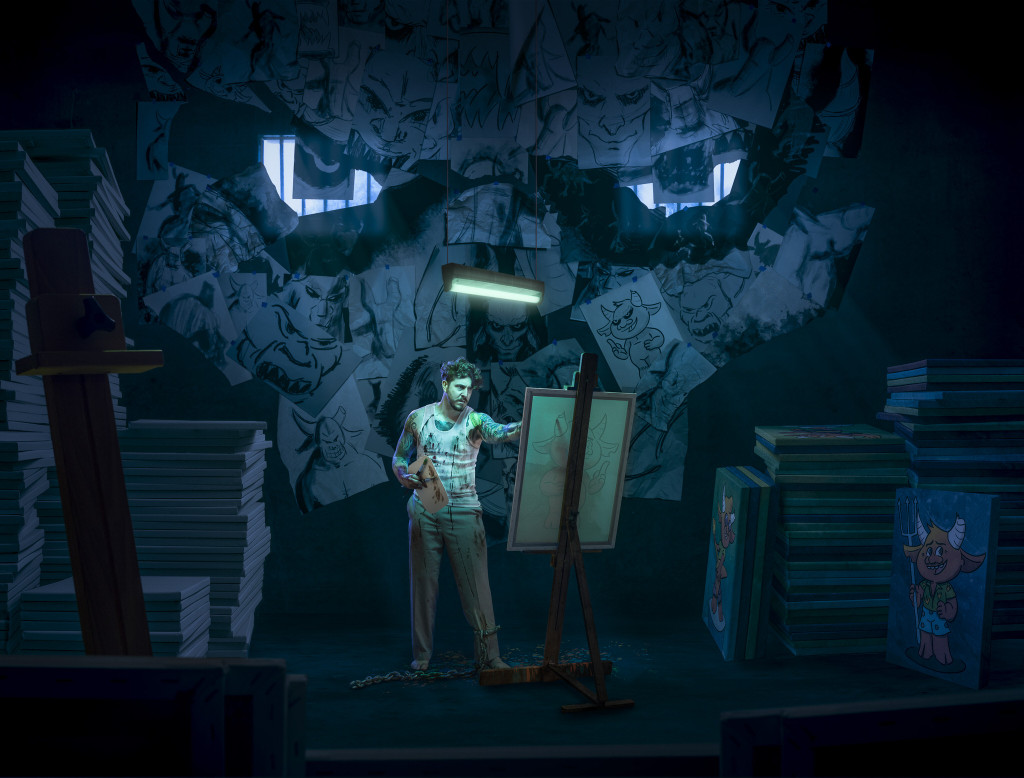
At the 2018 AIPP Professional Photography Awards, this was my third print up. It scored a very, very solid 89 after the first round of judging. Steve Scalone (genius travel and architectural photographer) was on 92, and put his hand up and made one of those challenges you REALLY want to get as a photographer. He touched on the narrative, the composition, the layering of stories… and since this is the first time I’ve ever printed my own work, it was gratifying to hear him say it was masterfully printed. The other judges who spoke were positive as well, resulting in Steve asking them to jump past his score and bring it in to the 95-100 Gold Distinction range. Three judges did just that! At the end of the day, this image scored a 95, a Gold Distinction, and was the highest scoring print in the Illustrative category. I don’t remember the judging too well, but I do remember my bones turning to jelly and me collapsing in a puddle in my chair next to Wanda when the final scores came through.

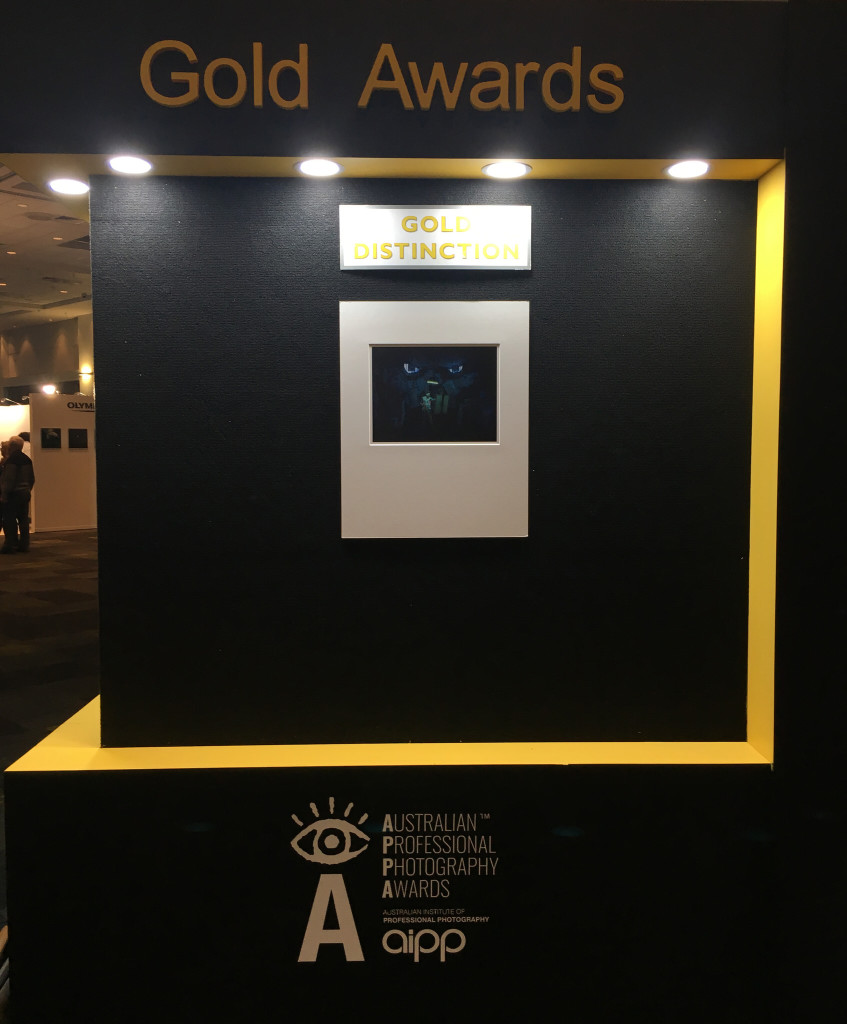
Biggest thanks to my family, for always always supporting me in whatever crazy projects I decide to kick off. I love you guys 🙂
MASSIVE thank you to Sean for collaborating with me on this. I’m really proud of this piece, and you should be too.
One of the things that was mentioned in the judging is the quality of image in the dark parts of the picture – there’s detail all the way through. Afterwards Steve asked me “You had blacks on blacks! How did you do that?!?” I’ve had the wonderful support of Eizo this year, and one of their monitors on my desk has made all the difference; there’s no way I could have kept so much detail in the darker parts of the image without a professional tool like my Eizo CG2730.
If you want to see this image as it evolved, and listen to the judges talk through it, grab some popcorn and watch this video!
The Muse has a few more outings where it will be judged; send some good vibes. Doesn’t matter how it goes though, really; I like it, and that’s all that matters.
